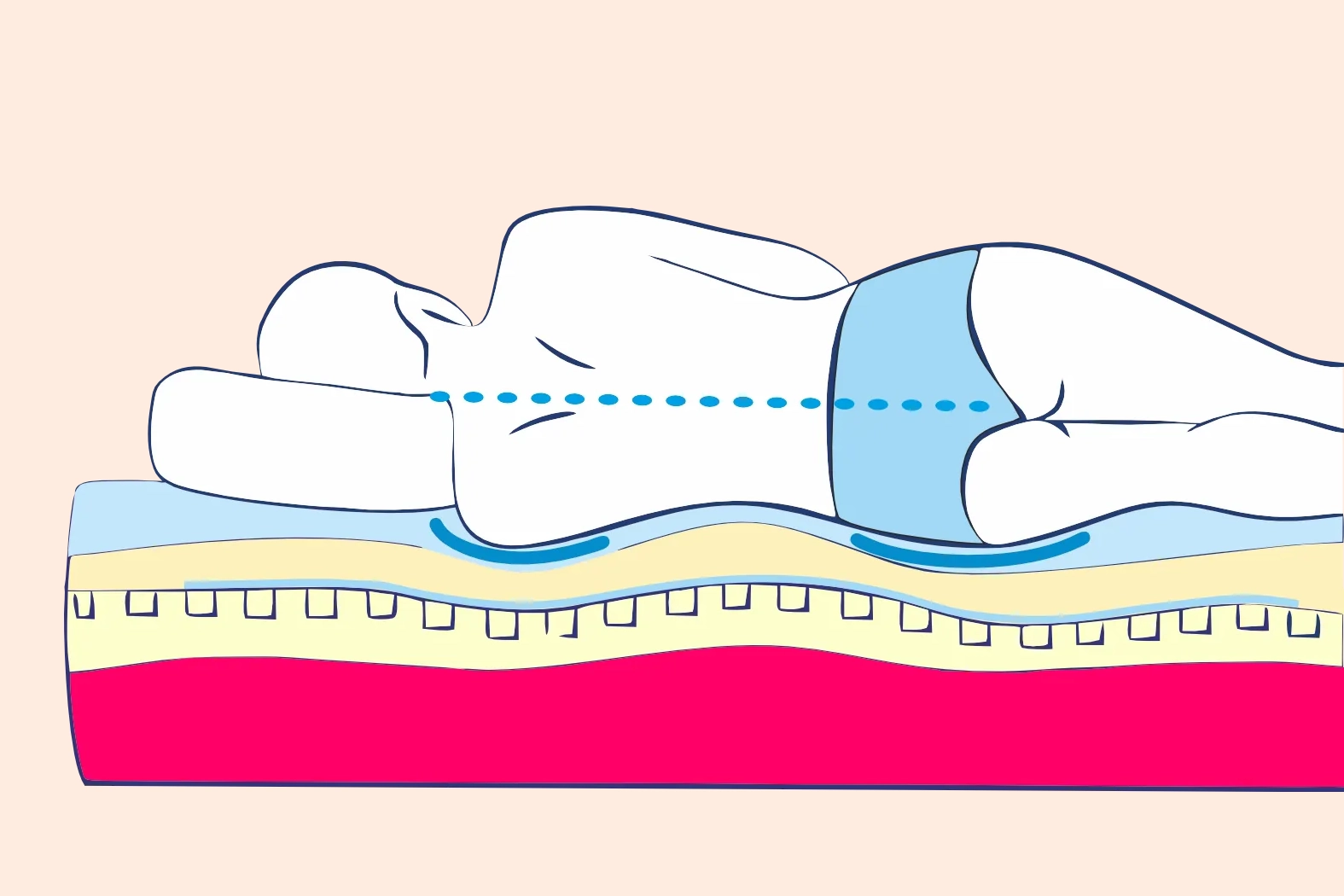To provide services at the highest level, we use cookies. Using the website requires you to choose settings related to their storage on your device. If you want to know what each type of cookie is used for, click the Details button below.
What is the healthiest sleeping position?15 czerwca 2023 |

The healthiest sleeping position is sleeping on your left side. Sleeping on the left side brings many health benefits, such as improved digestion, reduced acid reflux, and prevention of gastric reflux. This position also facilitates proper blood circulation and reduces pressure on internal organs. However, sleeping on the right side is recommended for certain conditions. Nevertheless, sleeping on your back is also a good position, provided that the spine is kept in a straight line. In any case, this requires having a mattress and pillow that support this alignment.
The spine rests best in a position where it is kept in a straight line with the head. Its natural curves, such as lordosis and kyphosis, should also be maintained. This means that both side sleeping and back sleeping can provide proper spinal alignment if the functionality of the mattress allows for it. It is important to avoid sleeping on the stomach as this position can lead to tension and improper spinal alignment.
An orthopedic pillow can be comfortable for some individuals, especially those who have spine issues or suffer from neck and shoulder pain. Orthopedic pillows are designed to provide proper support for the spine and help maintain it in the correct position during sleep. However, it is always important to choose orthopedic pillows that have anatomical profiles supporting ergonomic body alignment.
The frequency of replacing an orthopedic pillow depends on its condition and quality. The lifespan of an orthopedic pillow depends on the type of foam used and the quality of the pillow cover. Most manufacturers recommend replacing orthopedic pillows every 2 years at maximum. However, there are also orthopedic pillows made of durable materials that can last for a longer time. Orthopedic pillows from the Polish manufacturer ONSEN® come with a warranty of up to 10 years. It is worth regularly checking the condition of the pillow and replacing it when it starts to lose its supportive properties and comfort.
Most people adapt to an orthopedic pillow within a few days and do not experience any difficulties, provided that the pillow is built to correspond to the anatomy of the human body. However, for some individuals, the process of adapting to a new orthopedic pillow can take up to 5 weeks. The duration depends on the severity of the cervical spine discomfort - the greater the discomfort, the longer the adaptation process. Therefore, it is recommended for individuals who feel discomfort during this period to gradually increase the time spent on the pillow while sleeping on a traditional pillow for the remaining time. It is also recommended to use orthopedic pillows from the Polish brand ONSEN® in combination with the Osaka Air mattress. This ensures proper body contouring while maintaining the physiological position of the entire spine, not just the cervical spine. This comprehensive approach significantly enhances the health-promoting properties of the orthopedic pillow.